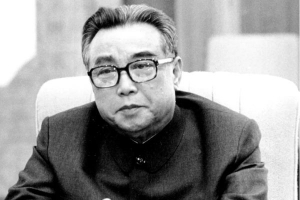Top 10 Interesting Facts about Incheon
Korea has a long history and is renowned for its diverse culture. However, a lot of its cities are disregarded in favor of energetic Seoul and busy Busan. One ... read more...of such cities is Incheon, Seoul's neighbor to the southwest. The South Korean city of Incheon, which borders Seoul, has long been a major center for transportation. A casino, spa, and golf course are located near the sizable, modern Incheon International Airport, which also provides train access to Seoul. Many boat cruises depart at Yeoman Pier, which is close to the well-known Incheon Fish Market. Yeongjong and Muui-dong are only two of the beach islands in Incheon that are well-known. It is slowly paving its own course by fusing its past with its future aspirations. In this article, let us read with Toplist to discover 10 Interesting Facts you may not know about Incheon, a city that blends amazing natural vistas with timeless thoughts and historical tales.
-
Incheon is a port city in northwestern South Korea. It is situated at the Han River's mouth, 25 miles (40 km) southwest of Seoul, and is connected to that city by both a highway and a train. It shares the same latitude as San Francisco, Washington, Madrid, and Tehran at east longitude 126°37 and north latitude 37°28'. After Seoul and Busan, Incheon is the third-largest city in Korea, with a population of over 3 million people residing and working in this bustling seaside city. Incheon is split into 10 administrative districts, 10 wards, and 2 districts.
Over the coming several decades, Incheon has great potential for growth and development. It serves as the site of South Korea's main international airport as well as the main seaport for the nation's capital. The fact that it is so close to the capital city, you can get from Seoul to Incheon in less than 30 minutes is one of the Interesting Facts about Incheon.
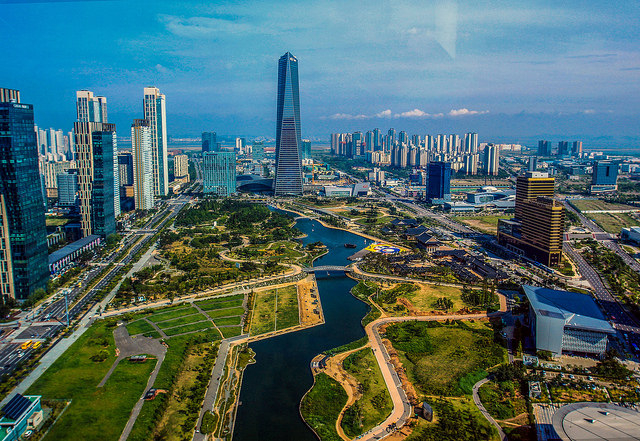
Photo: tripzilla.com VIdeo: Korea Road Tour -
Incheon has a long history of renaming. This thriving metropolis has had many name changes throughout its existence. Gyeongwon, Michuhol, Inju, Jemulpo, and Inchon are all associated with a part of Incheon's history up until the early 1400s. The Incheon region first appears in written history around 475 AD, during the reign of King Jangsu of Goguryeo, also known as Michuhol, whose capital is said to have been atop Munhak Hill today. With succeeding kingdoms and dynasties, the region has seen several name changes. Incheon was referred to as Gyeongwon or Inju during the Goryeo era. Incheon became the official name in 1413. Incheon District then changed its name to Incheon Metropolitan Province. The southern parts of modern-day Incheon (Jung-gu, Dong-gu, Nam-gu, Yeonsu-gu, and Namdong-gu) and the northern portion of Siheung city made up Old Incheon. Guang-dong, where the provincial office and regional academy are situated, serves as the city core. The Incheon district office's two remaining "original" buildings are found near Munhak Elementary School, while the brand-new 2001 district office building is situated just across from Munhak Baseball Stadium.
Before the port's completion in 1883, the city's other historical name, Jemulpo, was not widely used. Up until the Japanese takeover, it was widely used. The city center was relocated from Gwangyo to Jemulpo with the opening of the Incheon port. Jemulpo or Gwangyo-dong is now thought of as the "original Incheon." During the Japanese occupation, it was often known as Jinsen due to the Japanese pronunciation of the Chinese characters for Incheon.
Before Korea implemented the new Romanization system in 2000, Incheon was also known as Inchon. Inchon, its romanized name, is a Korean word that means "friendly river".
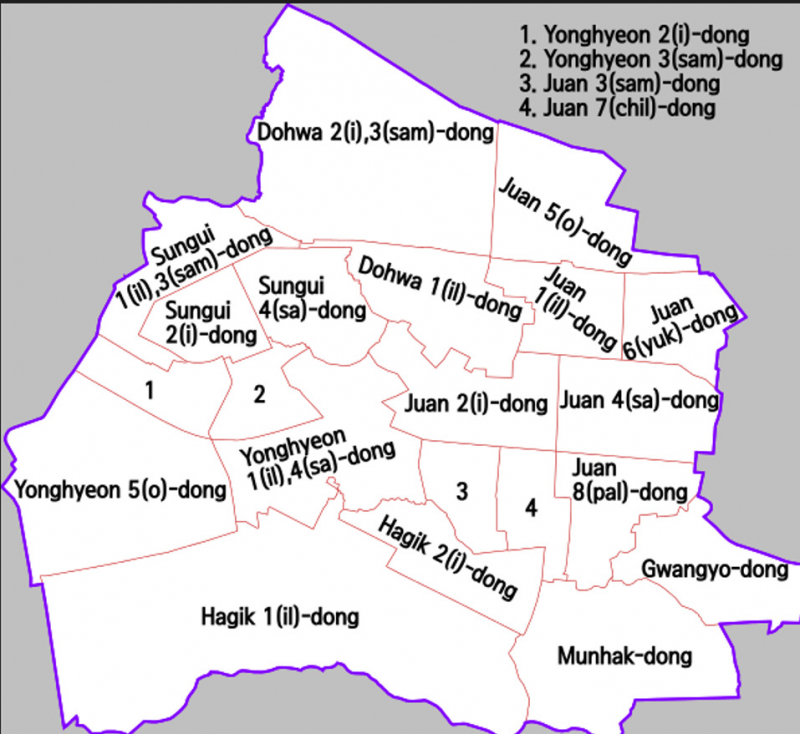
Michuhol District - Video: wikipedia.com 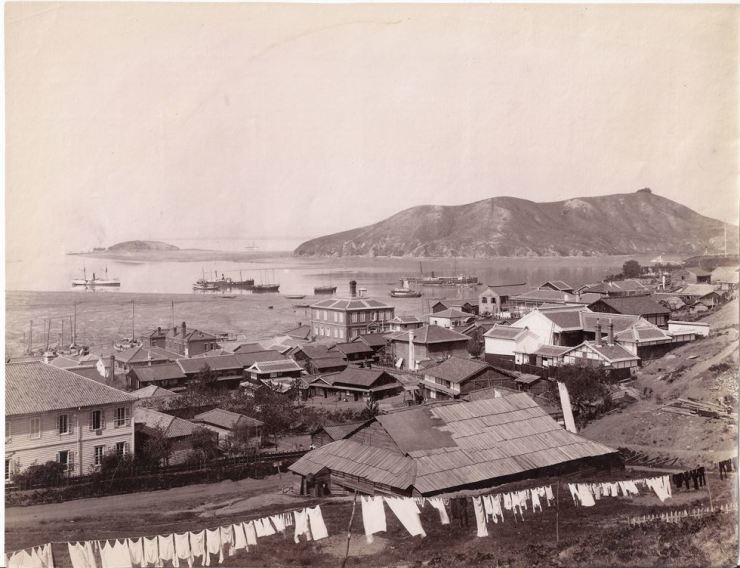
Korea's first foreign hotels in 1880s Jemulpo - Photo: koreatimes.co.kr -
Incheon is a city steeped in history. The Battle of Chemulpo Bay took place here. The Russo-Japanese War (1904–1955)'s Battle of Chemulpo Bay took place on February 9, 1904, off the coast of what is now Incheon, Korea (then known as Chemulpo). Chemulpo was recognized to be a key strategic objective for both sides at the time. First, Chemulpo's primary port was Seoul. Second, in 1894, the Japanese had already sketched out possible invasion routes via the region. The battle, which took place on February 9th, 1904, saw over 30 soldiers lost on both the Russian and Japanese sides when Japan moored in the harbor with its foe.
On July 4, 1950, Korean soldiers entered Incheon and took control of it during the Korean War. At the Battle of Inchon, US forces landed in Incheon to release pressure on the Pusan Belt and create an opening Northward United Nations assault. She was eventually reclaimed on September 19, 1950, as a consequence of a resounding UN victory. The ensuing turn-around fight inspired the naming of the ship "USS Inchon".
The significance of Incheon in the history of the nation, especially during the Korean War, is reflected in the city's various memorials. The General MacArthur memorial at Jayu Park is arguably the most renowned. The monument honors US General Douglas MacArthur's heroic amphibious invasion of Incheon in 1950, which helped the city be retaken after being occupied by the North Korean People's Army.
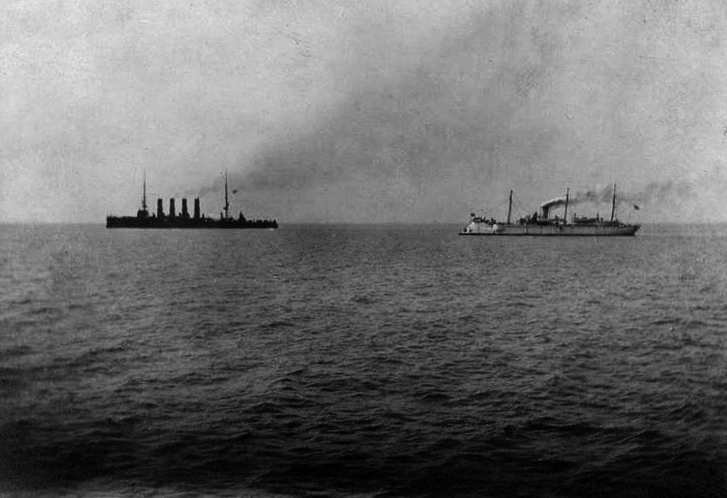
The Battle of Chemulpo Bay - Photo: wikipedia.org 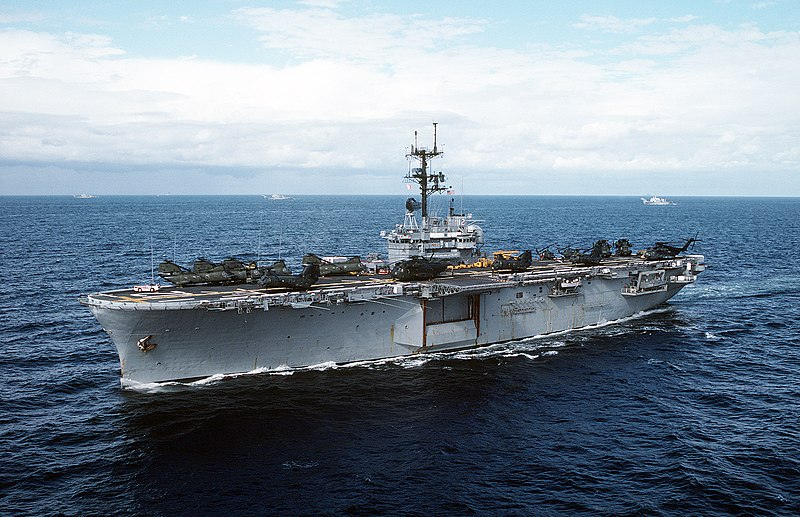
USS Inchon - Photo: wikipedia.org -
One of the Interesting Facts about Incheon is that it proclaimed itself to be an “English City” on 27 February 2007 and inaugurated the "Incheon Free English Zone" program. Incheon always encourages its people to speak English because officials desired that residents acquire the same degree of proficiency in English as their neighbors in Singapore and Hong Kong. The tagline of this government-backed initiative, "Smile with English," is pushed all around the city in an effort to make the city a major international business center.
Prior to its 'Play-Eng' idea, a one-day English camp with native English teachers in Korea, Incheon English Village is expanding its programs for teaching English and actively recruiting new students. For elementary and middle school kids in Incheon, this one-day English camp will be organized with the theme of "Dream Job High." Students can select their desired dates from July to December 2022. An official from the English Village in Incheon Metropolitan City said the idea is to allow students to practice their English with a native English speaker for a day, lessen their anxiety around foreigners, give them new motivation for learning the language, and give them time to consider their future by holding classes that are related to their career interests.
The participating students will take part in a work experience course where they will explore their career options with native English teachers, study expressions in their subjects of interest, and learn about a variety of vocations. Additionally, students can participate in programs like the "Life Culture Experience Class," where they can learn various English words and sentences associated with everyday life, and the "Team Building Class," where teams collaborate to complete a task, and practice natural conversation through role-playing.
Additionally, Incheon is supporting new ideas like the "ECO Kids Kindergarten," "KITE Elementary School," and the "Edible International School," where spring semester classes are being held from March through July.
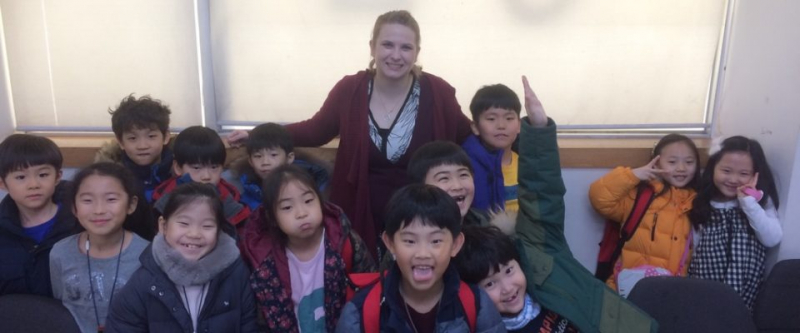
Teach English in Incheon Korea - Photo: travelandteach.com 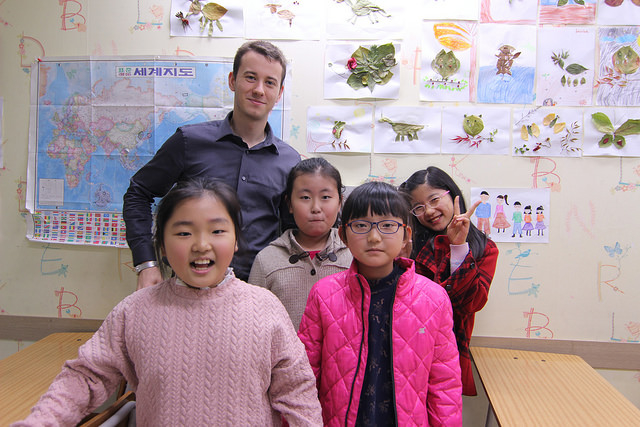
Photo: travelbud.com -
Incheon's economic strategies put the city ahead of its time. Incheon created Korea's first free economic zone in 2003 with a focus on business and nationwide transformation. With 71 square miles, the Incheon Free Economic Zone (IFEZ) is larger than some European nations. The Korean government wants to draw in global companies and establish a business and tourist hub that is known across the world. Commercial, economic, and even residential projects will be built in Songdo, Yeongjong, and Cheongna, the three Incheon neighborhoods that make up the IFEZ.
Major industrial parks include Namdong Industrial Park, Juan Industrial Park, and Bupyeong Industrial Complex, which is home to the GM Incheon Plant (formerly known as the GM Daewoo Incheon Plant).
Biotechnology has recently begun to take off as the city's newest and fastest-growing industry. The city now shares the second spot in the world for manufacturing capacity with San Francisco, United States, with a combined production capacity of 330kl per year. The city will be the first in the world with a manufacturing capacity of 510kl after the capacity increase is finished in 2018. The fourth-ranked cargo airport in the world, Incheon Airport, and the development of Incheon Port have both contributed to the fast growth of the logistics sector.
Incheon Free Economic Zone - Video: Korea FEZ Video: Korea FEZ -
The only recognized Chinatown in Korea is in Incheon. It was established in 1884 and is situated in Jung-gu. It boasts an 11-meter-high Chinese-style entryway and is regarded as Korea's largest Chinatown. Incheon Chinatown is home to a modest number of persons who are of Chinese heritage as of 2007. Incheon's Chinatown offers a wide variety of cuisine and tourist attractions.
Following the contemporary era in the late 1800s, Incheon had a cordial relationship with China. By agreeing to the China-Korea Treaty of 1882 with China in 1882, Korea established modern trade. With the Incheon Port's inauguration in 1883 and Incheon's classification as a Ching Dynasty extraterritoriality, the city's Chinatown neighborhood was born. Following this, the "Incheon Chinese Society" was officially founded in the current Incheon in 1885. According to a record from 1883, 63 Chinese people resided there. In a year, they grew to 235 individuals. They expanded to 637 persons in 1892, and by the beginning of 1900, they had reached around 1000 people. There are 50,000 overseas Chinese people residing in Incheon as of 2015. The relationship between Korea and China was enhanced through Incheon Chinatown. Incheon's Chinatown has a more than 100-year history. The region still has many of the distinctive characteristics of China, even if the first generation's traditional culture has not been fully preserved. The majority of the Chinese people that live in Chinatown now are second or third-generation descendants of the first Chinese settlers.
Foods like Sweet and Sour Pork, Assorted Seafood and Vegetables with Mustard Sauce, Noodles with Black Soybean Sauce (Jajangmyeon), Fortune Cookies, Mooncakes, Gongal Bread, and others can be found in Incheon Chinatown. A type of bread known as a "moon cake" is made in the form of a round moon. It represents Chinese Thanksgiving cuisine in the same way as a rice cake does in Korea. A type of Chinese bread is Gongal bread. It's referred to as a Chinese pancake. The loaf is hollow within, and just the outside has been overbaked.
There are several locations where you may buy a wide array of goods, including Chipao, antique pottery, traditional tea, jewelry, accessories, and teacup sets. China's traditional costume is called Chinese Cheongsam or Chipao. This costume may be worn by both men and women. However, it is typically used to describe a dress for women.
Korea and China Cultural Center, Peru, Uiseondang, the History of Three States Mural Street, and other attractions can be found in Incheon Chinatown. The Peru traditional Chinese gate, the Uiseondang Chinese temple, and the History of the Three States are all located near the entrance to the settlement. Other attractions including Freedom Park, Songwoldong Fairytale Town, Wolmido, and so on are nearby Incheon Chinatown.
Incheon China Town - Video: Walk with Ruru Chinese street food in Chinatown - Video: Strictly Dumpling -
Spending plan shopping has never been simpler. Everything you may possibly need can be found in the Bupyeong Underground Shopping Center or Bupyeong Modoo Mall. A seemingly infinite maze of stores provides a variety of items at reasonable costs, including clothing, purses, cosmetics, shoes, phone accessories, party supplies, stationery, and more. If you inquire, sellers will frequently give you a little discount if you're making a large purchase.
When compared to malls of comparable size, Bupyeong Underground Shopping Mall has the most retailers, with over 1,400 distinct businesses offering a range of fashion and styles. It can be enjoyable to just walk from store to store, however owing to the enormous number of stores, first-timers to this mall may find it difficult to navigate. The floors are labeled with color-coded directions to aid customers in finding their way. The mall's walks branch out into red, green, and blue trails from its center, while the area around the fountain is orange. Visitors are kept from getting lost by these color-coded floor markings and information boards, which also serve as a route to the business they are looking for.
Address: 7 Bupyeong Daero, Bupyeong-dong, Bupyeong-gu, Incheon, South Korea.
Bupyeong Underground Shopping Center - Video: Korea Vlogs Video: BryJa -
Jajangmyeon (black soybean noodles) is definitely one of Korea's favorite foods and is said to have originated in Incheon's Chinatown. Actually, Jajangmyeon is a Korean version of Chinese vermicelli noodles. Chunjang soy sauce, chopped beef, and vegetables that have been cooked in cooking oil are combined to create a thick sauce for this meal. Additionally, seafood can be found in this meal.
Jajangmyeon uses large noodles, either hand-made or pulled with a mixer with water, salt, and baking soda. The ingredients for the Jajang sauce are Chunjang soybean sauce, soy sauce (or oyster sauce), meat (usually pork, but occasionally beef), seafood (typically squid or shrimp), flavoring (scallions, ginger, and garlic), vegetables (typically green onions, squash or Korean squash or cabbage), broth, and soluble starch. When Jajangmyeon is served, it is garnished with thinly sliced cucumbers, green onions, boiled or fried eggs, blanched shrimp, or thinly sliced fried bamboo shoots. Salted yellow radish, sliced raw onions, and Chunjang sauce are included in this meal.
Jjajangmyeon has roughly 700 kcal or 28 percent of the daily calorie requirement for males and 35 percent for women in Korea.
At Gonghwachun, one of the largest and most well-known Jajangmyeon restaurants in the whole nation, visitors may savor the tastes of this delectable food. Or, find out more about the cuisine at the Jjajangmyeon Museum, which provides an overview of its history and impact on the nation through a number of exquisitely designed exhibitions.
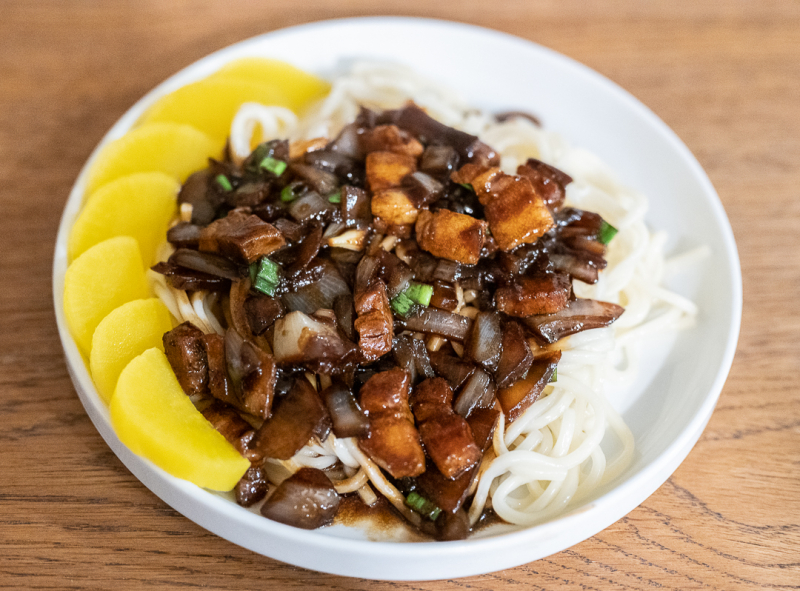
Jjajangmyeon - Photo: pacificpotluck.com Making black soybean noodles, Jajangmyeon - Video: ETTV 이티티비 -
The biggest airport in South Korea is Incheon International Airport. One of the biggest and busiest airports in the world, it is the primary airport servicing the Seoul Metropolitan Area. Actually, the volume of foreign aviation travel to Korea surged following the 1988 Summer Olympics. Gimpo International Airport became evidently unable to handle the rise in flight traffic in the 1990s. The government made the decision to construct a new international airport in order to lighten the burden on Gimpo International Airport. Due to its distance from Seoul and Gyeonggi, the new airport was initially intended to be built at Cheongju, 124 km to the southeast of Seoul. The alternate option, Hwaseong, was also disregarded for the same reasons. Incheon was finally picked as the location.
On the reclaimed ground between Yeongjong Island and Youngyudo Island, the Incheon airport was built beginning in November 1992. The project took eight years to complete, plus an extra six months for testing. Initial plans were for completion in 1997, but the recession caused it to be postponed. The airport was formally inaugurated on March 21, 2001.According to Skytrax, Incheon International Airport is now ranked as the fourth-best airport in the world as of 2021. Additionally, Skytrax has ranked this airport as both one of the cleanest airports in the world and the greatest international transit airport in the whole globe. In addition to receiving the prize for best airport security in 2021, Incheon International Airport is one of Skytrax's five-star airports.
Incheon International Airport held the top spot in the yearly list of the world's finest airports from 2005 to 2011 according to Airport Council International (ACI). Additionally, from 2006 to 2016, until the rating cycle came to a close in 2017, ACI recognized this airport as the top airport in Asia-Pacific for ten years in a row.
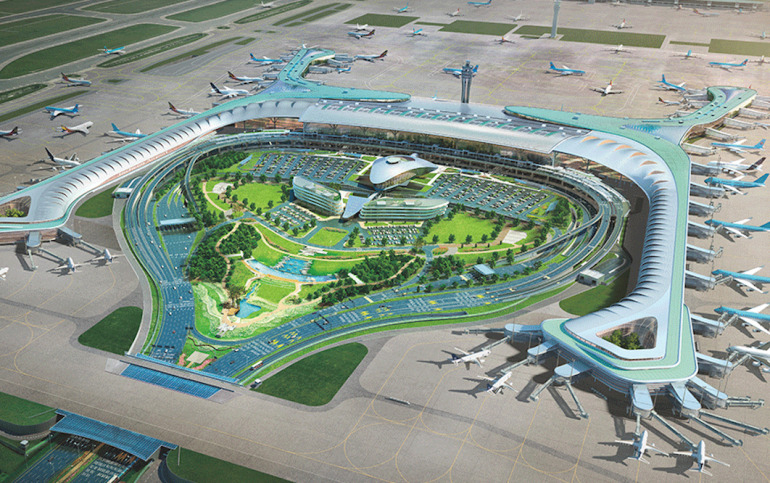
Photo: skytrax.com Incheon International Airport - Video: Traveller - Two Travel -
Incheon won two Guinness World Records including Bupyeong Station and the largest outdoor painting.
The world's largest subterranean shopping complex is a metro station called Bupyeong Station. The mall has 1,400 businesses and is 104,000 square feet large. A metro stop called Bupyeong Station is situated in the South Korean city of Incheon's Bupyeong District. Both the Seoul Subway Line 1 and the Incheon Subway Line 1 stop at this station. Due to its convenient location and link to the Seoul line, it is one of the busiest stations on the Incheon line. A passageway beneath that connects the station is lined with tinier stores that provide a variety of things, including clothing, accessories, electronics, and books. Many of these products are available for less money than they would cost in typical retail stores. The station building also houses a big Lotte Mart store, a food court, retail stores, several eateries, a Uniqlo store, and other businesses.
Additionally, Guinness Globe Records has named an outdoor painting atop a grain silo in the port city of Incheon, west of Seoul, as the largest in the whole world. The mural is 23,688.7 square meters and is 48 meters high, 168 meters long, and 31.5 meters broad. The Pueblo Levee Project in Pueblo, Colorado, previously held the Guinness World Record for the biggest outdoor mural with a surface area of 16,554.8 square meters. Since January of this year, the Incheon city government and Incheon Port Authority have hired 22 painters, paid 550 million won ($487,000), and utilized 865,400 liters of paint to create the mural. The mural's design tells the tale of a young child becoming an adult and is made to look like a whole set of 16 books, each with a cover depicting one of the four seasons: spring, summer, autumn, and winter.
The project, which originated from the community art projects of the 1920s that swept the United States and Mexico and focused on enormous and vibrant murals in an effort to bring residents and businesses together, was part of efforts to improve the negative perception of old industrial facilities, according to the city government and the port operator. Government representatives and the port operator are hoping that the painting would increase tourism on Wolmi Island, one of the most popular tourist destinations close to the Port of Incheon.
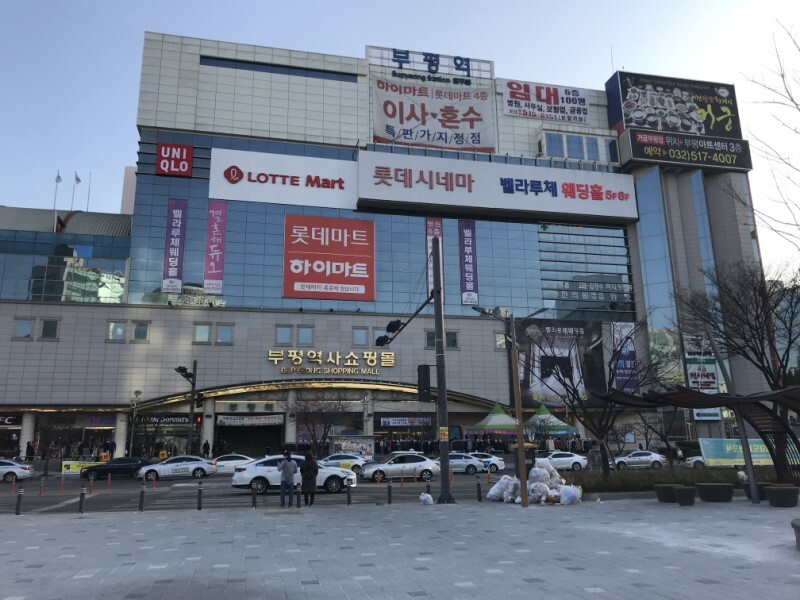
Bupyeong Station - Photo: naver.com Mural on silos in South Korea recognized by Guinness as world’s largest - Video: Hindustan Times





















